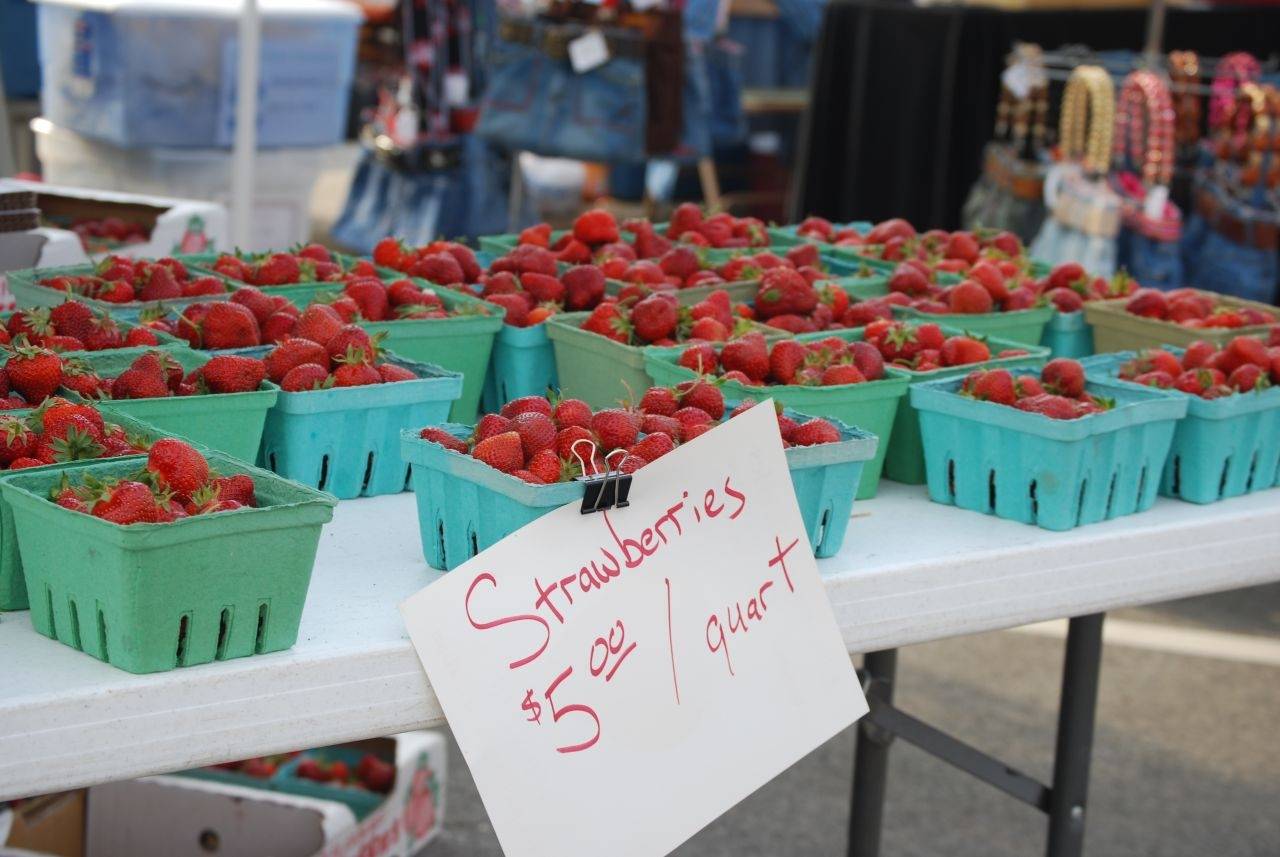 High gas prices, the threat of nuclear crisis, the deposition of a despotic world leader, and deadly tornadoes in the Southern United States were prominent headlines during the summer of 1979. One local event would go almost completely unrecognized in local news that year, but would grow to be an integral part of Champaign-Urbana’s summer atmosphere: a small number of local farmers organized Urbana’s first Market on the Square. What began as four farmers selling their goods on the courthouse grounds has grown to include 162 vendors, 92 community groups, and 51 performers during its 2010 year. Now held outside of Lincoln Square Mall from early May through October, there are participants at the Market who have been involved in nearly every season, even inaugurating a new generation of vendors.
High gas prices, the threat of nuclear crisis, the deposition of a despotic world leader, and deadly tornadoes in the Southern United States were prominent headlines during the summer of 1979. One local event would go almost completely unrecognized in local news that year, but would grow to be an integral part of Champaign-Urbana’s summer atmosphere: a small number of local farmers organized Urbana’s first Market on the Square. What began as four farmers selling their goods on the courthouse grounds has grown to include 162 vendors, 92 community groups, and 51 performers during its 2010 year. Now held outside of Lincoln Square Mall from early May through October, there are participants at the Market who have been involved in nearly every season, even inaugurating a new generation of vendors.
Recently I spoke with Bob Kleiss, 39, of Kleiss Produce Farm in Tuscola. A second-generation Market vendor, Kleiss began working at the Market with his father in 1981. He has since participated in every Market on the Square except for two — his senior skip day and his wedding — and has seen the event grow from one that was largely centered on growers and prepared food vendors to the Market shoppers know today: where arts and crafts, music, community groups, bakers, farmers, and local citizens converge during the summer and autumn in the Champaign-Urbana community.
Kleiss’s father, Barry Kleiss, had been selling his produce since the age of seven, peddling green beans grown in his yard to his neighbors. It had been his dream to be a successful vegetable farmer. Bob Kleiss now lives and farms the land on which his father harvested those beans…except now he plants about 8000 of the plants a year. His father’s initial interest in Urbana’s Market on the Square was a place to sell home-grown strawberries, and the venue holds the same draw for Kleiss. He has also discovered the social aspect of the market, getting to know individuals by their faces and their questions, which usually pertain to organic farming and how his produce is grown. He says there has been an increase in interest about local foods and growing, particularly in recent years.
While vegetable farming can be more profitable than the industrial farming of corn and soybeans, it is more work. Industrial farms operate a few months out of the year, while Kleiss’s farm is operational year-round. He works daily from six or seven in the morning to eleven at night. His day starts in the fields, looking for what needs planted, picked, or sprayed. He works in the shed or greenhouse if it rains. Vegetable farming cannot be mechanized to the degree that industrial farming has been, and certain crops, like sweet corn and peaches are, out of necessity, handpicked. As an example of the difference between man versus machine in farm labor, Kleiss described his green bean harvester. Attached to the back of a tractor, it separates pods from leaves, and picks 100 bushels in an hour. A person, by contrast, picks two bushels in the same time. And all of that farmed acreage (nearly 100 acres in all, plus 1500 peach trees and 1000 apple trees) gets to the public one of two ways: through produce auctions in nearby cities, and through Urbana’s Market on the Square.
For better or worse, recent years have see the Market’s focus shift from a farmer’s market to a marketplace with a variety of vendors, craftsmen, and community activists. There is a new diversity in those who work and visit the Market, and this growth of participants means decreased parking. The Market’s early days allowed vendors to occupy space into the late afternoon hours, where many saw an uptick in business after the morning rush. With the Market now open to the public only five hours a week, fewer hours means fewer sales. This leads to a need for more places for Kleiss to sell his goods. There has been a growth in community markets in nearby towns (even as close as Champaign, which hosts a farmer’s market on Thursday evenings), and Kleiss now takes his vegetables to largescale farmer’s auctions, as well.
To say that the Market has evolved in its 32 years is an understatement. This year will see the continuation of the the Market Scratch program, allowing shoppers to use credit, debit, and LINK cards to make purchases. Dogs have been prohibited due to human and canine safety. More space has been added for community groups. For Kleiss, it remains about family, who help him pick the food and sell it at the Market. With his father’s death four years ago, the operations of the farm have fallen to him. The Market on the Square is something in which he participates because of father’s legacy. He says, simply, “I wouldn’t be doing this if it wasn’t for my dad.”








